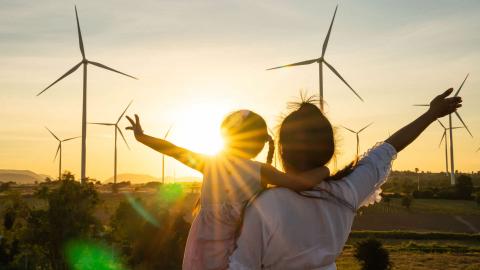
The Inflation Reduction Act (IRA) of 2022 includes significant funding for renewable energy. The IRA makes loans and tax credits available for things like clean-energy projects and transmission infrastructure. Utilities have an opportunity to use these incentives to add renewable energy to their generation mix. But how do utility customers feel about renewable energy? Let’s find out!
In this blog post, we provide a sample of our insights into customer perceptions around renewables in 2022 using data from the E Source Residential Customer Insights Center, an online analysis tool that compiles data from the Claritas Energy Behavior Track annual online survey of about 32,000 residential customers in the US (conducted in partnership with E Source). You can use this data to inform how you prepare for and communicate about your own renewable-energy transition. If you’re eager to see more results, members of the E Source Residential Marketing Service can learn more in the report What do your customers think about renewable energy?
Do customers prefer to purchase from companies that take action for the environment, employees, and communities?
In 2022, we added a new survey question. We asked respondents about their preferences for buying from companies that take action for the environment, employees, and communities. We found that 60% of respondents preferred to purchase from these kinds of companies (figure 1).
Figure 1: Consumer opinions about purchasing from companies that take action for the environment, employees, and communities
How do utility customers really feel about renewable energy?
Respondents showed the highest support for tax rebates for solar or energy-efficient vehicles (44%). And they told us they see solar as an important energy source (43%) (figure 2). Some respondents also support:
- Regulating carbon dioxide (38%)
- Increasing the supply of renewables (38%)
- Replacing fossil fuels with renewables (37%)
Figure 2: Consumer support for renewable energy
Do customers think their utility should source more renewable energy?
A majority (63%) of respondents agreed that more of their utility’s electric supply should come from renewable energy resources. This trend is consistent from 2021 to 2022.

